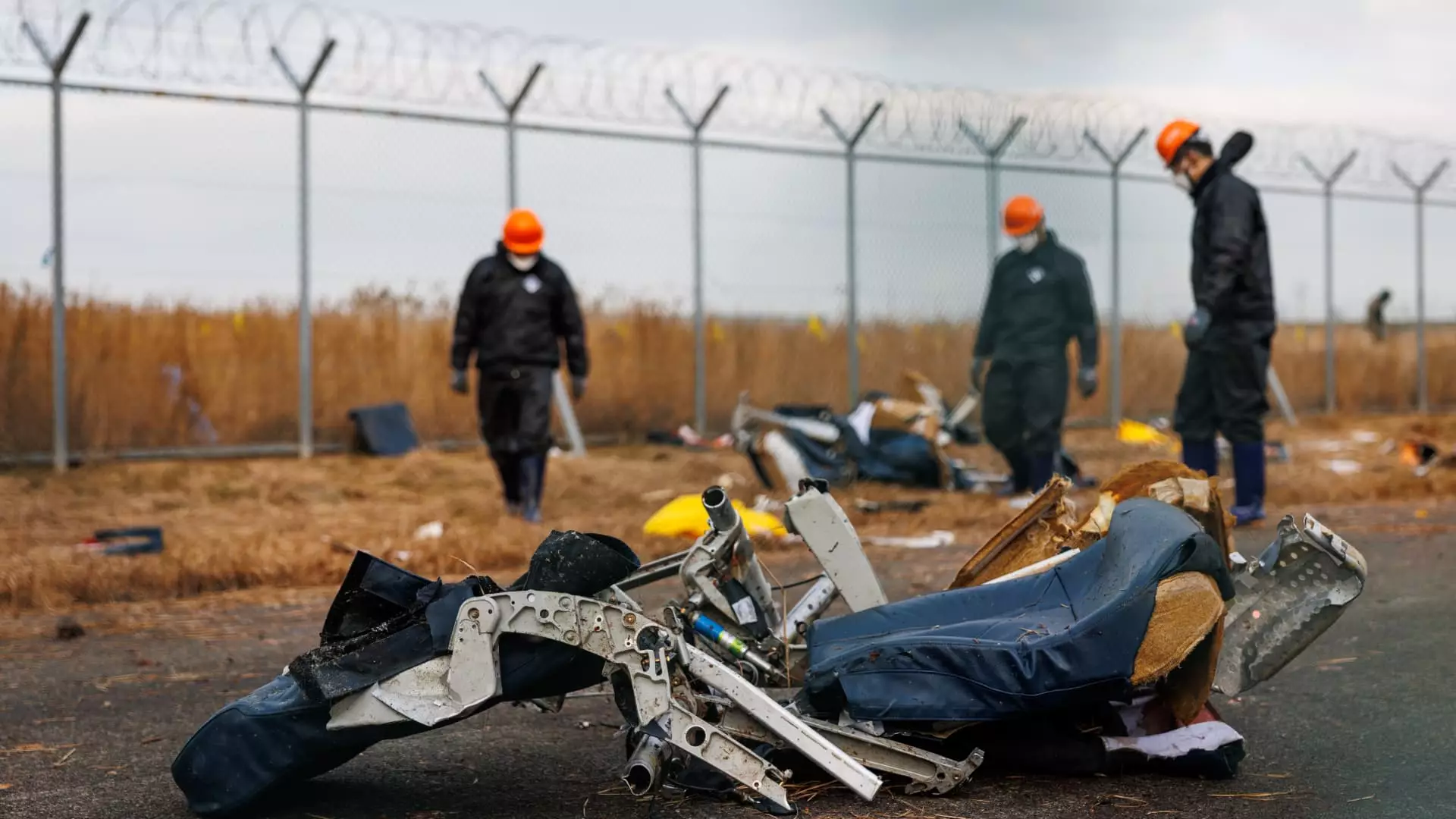The recent tragic incident involving a Jeju Air flight has reignited concerns over the safety of the Boeing 737-800 aircraft. The crash, which occurred shortly after takeoff from Muan International Airport, claimed the lives of 179 passengers and crew members. The crash, which unfolded as the aircraft struggled with landing gear deployment, raises significant alarms over safety protocols and prompts urgent inspections by South Korean authorities. Following this catastrophic event, Boeing shares experienced a significant dip of nearly 5% in premarket trading, indicating the immediate financial repercussions of the crash on the aviation giant.
In the wake of the disaster, South Korea’s Acting President, Choi Sang-mok, called for an exhaustive safety inspection of the nation’s airline operations. The Ministry of Land, Infrastructure, and Transport (MOLIT) is tasked with examining each B737-800 aircraft in the fleet, which is widely used by local airlines. With Jeju Air operating the largest fleet of these aircraft, the implications are profound not just for Boeing, but also for the continued operation of one of South Korea’s main low-cost carriers. MOLIT’s plans to conduct a thorough review of operational records and maintenance practices emphasize the government’s commitment to bolster safety standards amidst growing scrutiny.
Investigation updates have started to paint a clearer picture of the circumstances that led to the disaster. Preliminary reports indicate that the flight’s pilot reported a bird strike shortly before attempting a crash landing. In addition to the radar warnings from the control tower about bird activity, there was a distress call indicating an aborted landing and a declaration of emergency. Such findings necessitate a comprehensive analysis of both the aircraft’s mechanical conditions and prevailing environmental factors that might contribute to similar emergencies in the future.
The retrieval of two black boxes from the wreckage signifies a pivotal step toward understanding the sequence of events that occurred during the flight. Analyzing these devices is crucial for the U.S. National Transportation Safety Board (NTSB) and South Korea’s investigation teams, as they work jointly to decipher the technical anomalies that preceded the crash. It is imperative that authorities pinpoint whether mechanical issues or pilot decisions played central roles in the devastating outcome, given the potential for systemic failures within aviation protocols.
As aviation stakeholders review their safety regulations, there is an increased focus on the Boeing 737-800 model itself. This model has been operational for nearly three decades and has served as a backbone for numerous low-cost airlines. However, the crash at Muan International Airport highlights the need for stricter guidelines, specifically concerning bird strikes, which are increasingly recognized as hazardous to flight safety, especially near airports with less established infrastructure.
There is a distinct possibility that this crash could prompt an industry-wide reevaluation of safety measures for older aircraft models, coupled with bolstered regulatory frameworks for newly constructed airports.
Boeing finds itself under the microscope yet again, grappling with the fallout and reputational damage stemming from this incident. The company’s prior struggles with the 737 MAX model, which was grounded following two fatal crashes, have not been forgotten. Boeing’s response to the recent crash will be critical in shaping investor confidence and consumer trust. The company is expected to engage in transparent communication with regulatory bodies and the public as investigations unfold.
Simultaneously, the consequences have rippled through Jeju Air, leading to an 8.65% decline in its stock on Monday as the airline faces a myriad of questions about its operational safety and maintenance practices. Jeju Air’s leadership has assured the public that careful scrutiny will accompany their ongoing support for the affected families and their commitment to airline safety protocols.
The loss of life from the recent Jeju Air crash serves as a stark reminder that the aviation industry must continuously evolve to uphold safety standards. With heightened regulatory scrutiny looming, both Boeing and South Korean carriers face critical challenges ahead. For many passengers and families affected by this tragic event, accountability and restorative action must follow the tragedy to restore public confidence in air travel safety. The aviation sector must not only learn from these incidents but also pave the way for a future where flying can be synonymous with trust and reliability.


Leave a Reply